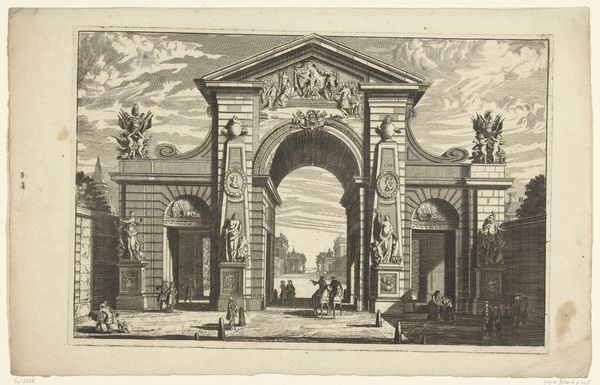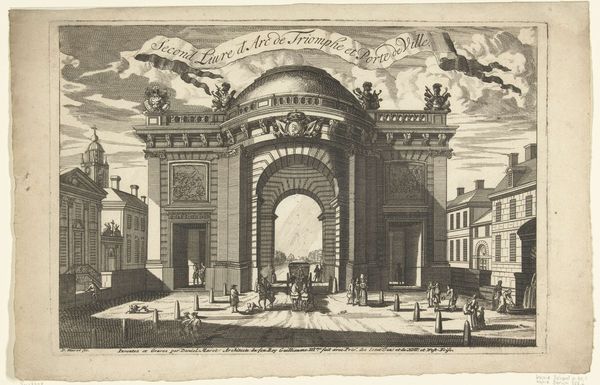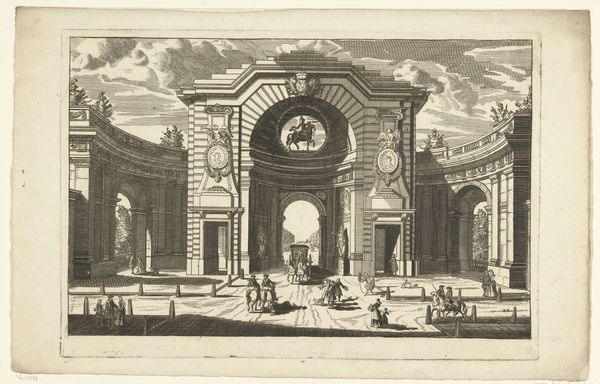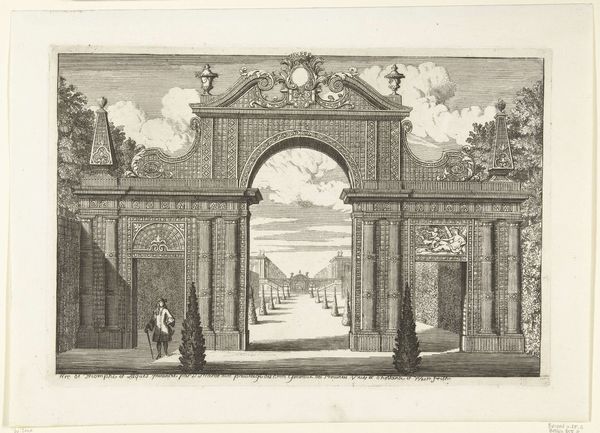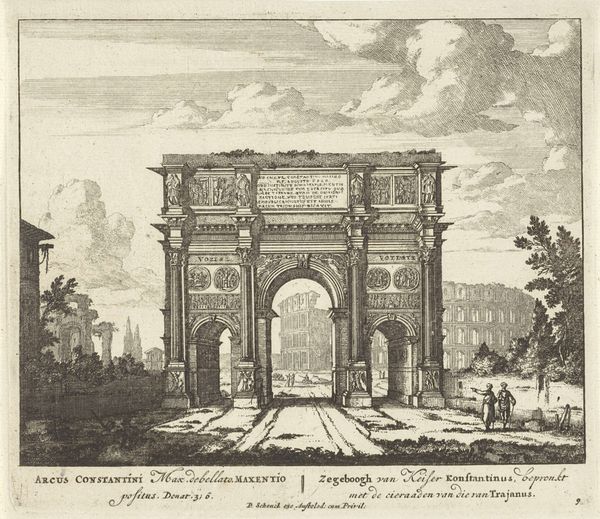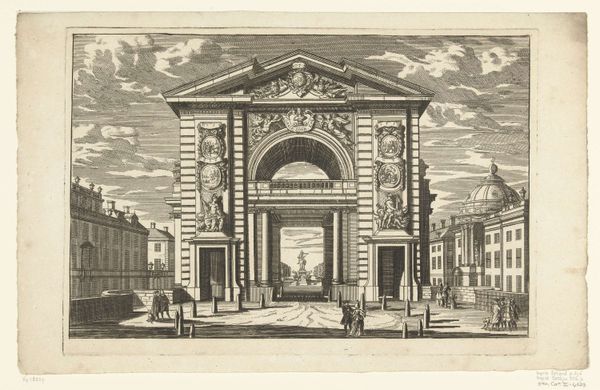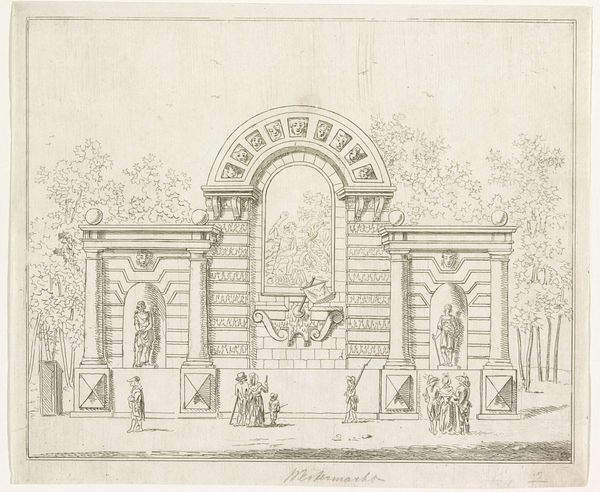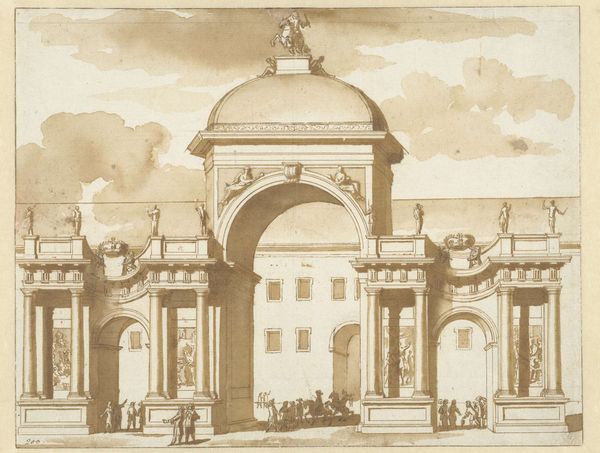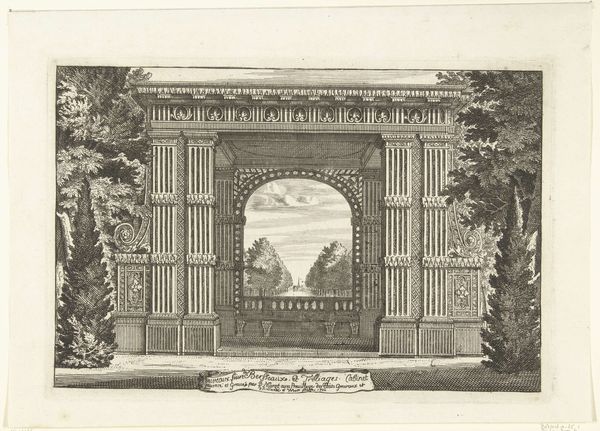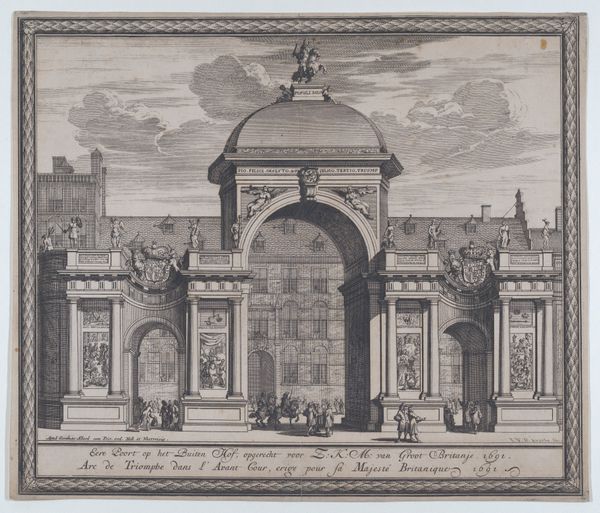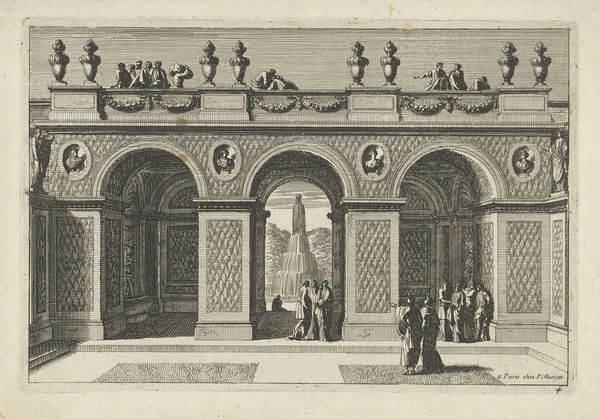
Stadspoort in de vorm van een triomfboog van de Toscaanse orde c. 17th century
0:00
0:00
print, engraving, architecture
#
baroque
# print
#
perspective
#
form
#
line
#
cityscape
#
engraving
#
architecture
Dimensions: height 186 mm, width 280 mm
Copyright: Rijks Museum: Open Domain
Curator: Looking at this print, "Stadspoort in de vorm van een triomfboog van de Toscaanse orde," made around the 17th century and currently residing at the Rijksmuseum, I’m struck by the artist’s commitment to clarity. The baroque architectural elements and bustling cityscape are sharply defined. Editor: The effect is quite grand, isn’t it? The rigid geometry mixed with human figures suggests a world where order and ambition reign, but it's almost cold in its perfection. What sort of symbolic weight would such an image hold, then? Curator: In this era, triumphal arches were potent symbols of power and authority, deeply rooted in Roman imperial imagery. It signaled a city’s self-perception, aspirations, and the rulers’ grip. This arch would have served to broadcast political messages and social hierarchies. Editor: Yes, I see it acting as an assertive claim on the landscape itself, yet more like a stage set than an urban intervention. Those crisp lines remind me of theatrical designs meant for projecting control during ceremonies of state, the whole design hinting at civic pageantry. But were such structures truly influential in controlling a populace? Curator: The architecture alone perhaps not, but combined with events that it framed—royal entries, military parades—it imprinted deeply. Think of the arch itself, too. It echoes classical structures like Hadrian's arch but given local nuance through ornamental crests above the central opening that act almost as a royal warrant of urban design. Editor: Right. And there's that linear perspective, a distinct compositional element ensuring your eye is drawn straight through to the cityscape beyond the arch, magnifying its function as a gateway to prosperity or some other civic virtue. What does it tell us about public space, back then, and even now? Curator: I see it highlighting the relationship between public display and personal experience, reinforcing the idea that the rulers watched and that individuals occupied roles carefully managed within the social structure, always watched and mediated via artistic interventions in our shared landscape. It is how our environments begin speaking. Editor: Indeed. This print reveals how political power got itself framed, quite literally, constructing how both present and future generations perceive authority through architectural narratives. The arch became both a spectacle, and spectacle's frame. Curator: Reflecting on this now, it strikes me how even a seemingly simple image contains layers upon layers of complex meaning relating not only to art history but to broader issues of political identity and social organization that extend into our present day. Editor: And that rigid geometry also shows us how authorities then were already crafting visual environments meant to influence perceptions on permanence and power – things we still contend with today!
Comments
No comments
Be the first to comment and join the conversation on the ultimate creative platform.
